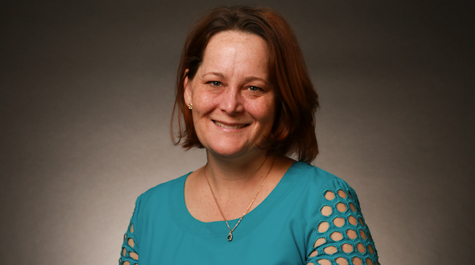Patricia Vahle named APS Fellow for innovative neutrino-oscillation research
The American Physical Society has named William & Mary physicist Patricia Vahle a 2020 APS Fellow.
Vahle, a professor in the university’s Department of Physics, was nominated by the APS Division of Particles and Fields, “for leading contributions to the measurements of neutrino oscillations using the MINOS and NOvA experiments.” She becomes the 21st William & Mary physicist, counting emeriti, adjuncts and research faculty, to be awarded the distinction.
“I’m very honored to have my work recognized in this way,” Vahle said. “I’m lucky to do work I love and lucky to work within a collaboration of smart and dedicated scientists.
MINOS and NOvA are experiments based at the U.S. Department of Energy’s Fermilab facility in Batavia, Illinois. Both experiments, like much of the work at Fermilab, focus on the study of neutrinos. Vahle explained that neutrinos are a fundamental particle of nature, “Meaning we can’t break them apart and find smaller things inside.” Understanding these unbelievably numerous subatomic particles — they’re the most abundant particle of matter in the universe — can open the doors to a number of perplexing problems.
“We hope that neutrinos can help us understand one of the most existential questions there is, why everything we can see in the universe is made up of matter and not anti-matter. Physics in the early universe should have made equal parts matter and anti-matter,” she said. “Where did all the anti-matter go? Or more interestingly, why didn’t the matter and anti-matter annihilate and leave only energy behind?”
Neutrinos have a number of qualities that make them challenging to study. For one thing, they rarely interact with anything. A swarm of gnats flying through a ladder is likely to log more gnat-rung collisions than the gazillions of neutrinos flying through Mount Everest every second. It gets worse: neutrinos have corresponding antiparticles, known as antineutrinos. And, neutrinos come in three known “flavors” — muon, tau and electron. But neutrinos don’t stay in one flavor; they change, or oscillate, from one flavor to another.
Vahle specializes in the study of neutrino oscillation. MINOS and NOvA are both neutrino-oscillation experiments. The two are similar in that they send a beam of neutrinos through 500 miles of earth to a far detector. MINOS came off line in 2016. NOvA is its successor and is bigger and more sensitive.
“With MINOS, we were able to measure the difference of the masses of two of the neutrinos and determine how much those neutrino flavors mix,” Vahle said. “NOvA built upon the MINOS knowledge and also the techniques developed in that experiment.”
NOvA also saw an upgraded beam, shooting out double the number of neutrinos. She explained that NOvA allows her and the other physicists to identify electron neutrinos more effectively.
“So, NOvA not only sees that neutrinos are changing flavor, but we can see how often muon-type neutrinos change into electron-type neutrinos, and we can do the same with antineutrinos,” Vahle said. “By comparing those two rates, we hope to learn whether a symmetry between particles and antiparticles is broken in neutrino oscillations. If it is broken, we may have the first piece of the puzzle that explains where all the antimatter went.”
Vahle and a number of other William & Mary physicists are supported in their neutrino study by the National Science Foundation. In 2018, she was elected co-spokesperson for the NOvA experiment. In that role, she often gets the chance to explain the science the experiment can do—and the importance of investing in basic research—to a mostly-lay audience including government officials, elected officeholders and the even more critical demographic of K-12 students.
 Skip to main content
Skip to main content

